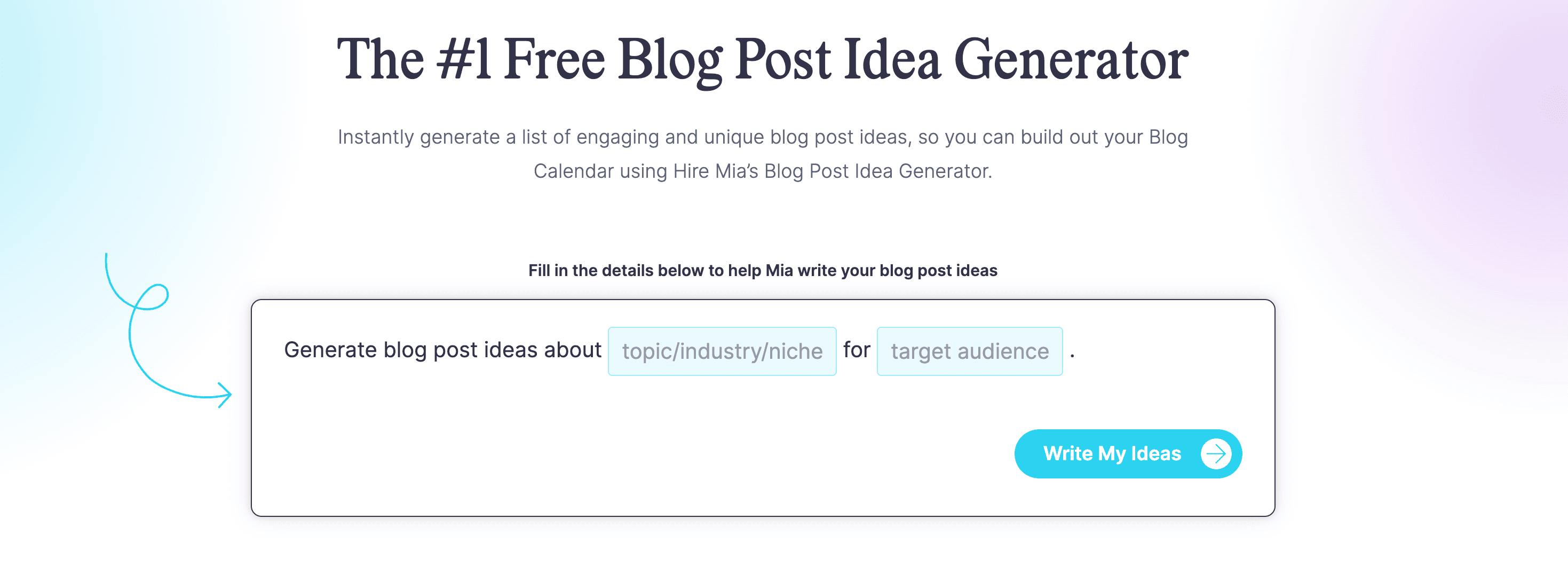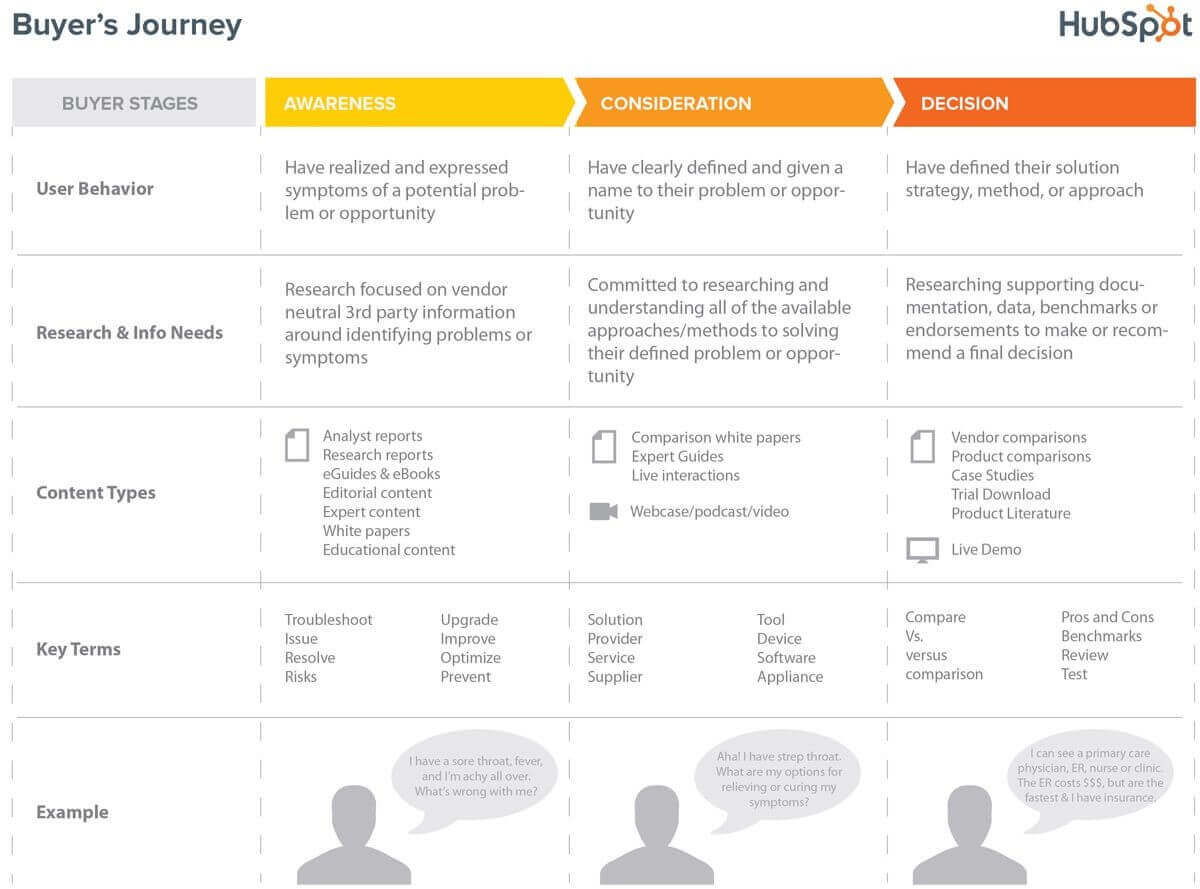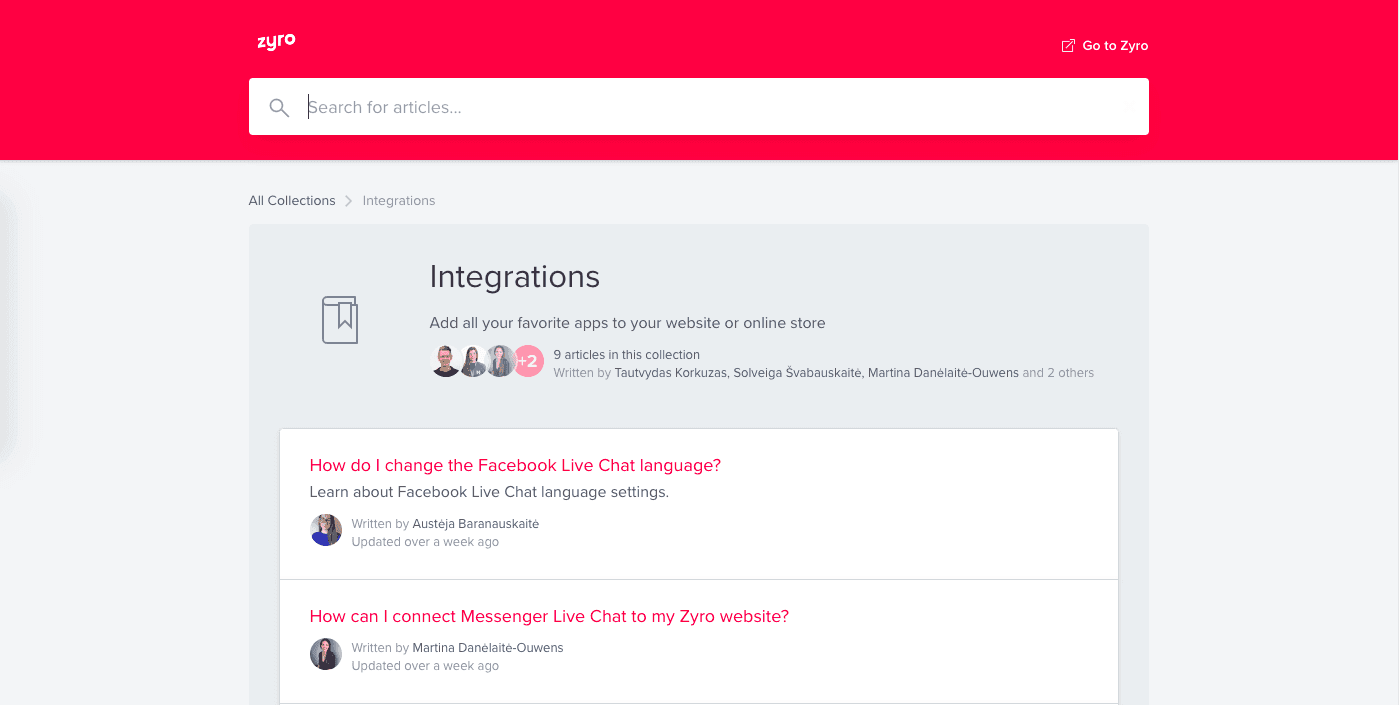A pillar for content marketing success is maintaining a blog. Not just any blog — one that puts out high-quality content on a consistent basis.
Sometimes, the bottleneck keeping marketers from doing just that isn’t the writing itself; not knowing what to write about can be the real struggle when it comes to blogging.
It can be challenging to come up with topics for articles and blog posts not only to fill up a regular editorial calendar, but also making sure they capture the target audience’s attention and engage readers enough to keep them coming back for more. Getting a stroke of inspiration is great, but when you’re creating content strategically, you want to be just as strategic during the ideation process.
Generate a list of engaging an unique blog post ideas by using CoSchedule’s Blog Post Idea Generator!
Just as you should have a repeatable process when it comes to writing, editing, publishing, and promoting your content, you should have a process for coming up with article ideas. Once you do, you’re guaranteed to have a blog schedule that never runs out of content.
Steps to Consistently Come Up With Article Ideas
Follow the steps below and you’ll have content ideas that are keyword-optimized, have a high potential for ranking, and will be valuable to your audience.
Step 1. Have a Clear Understanding of Your Audience
Before you start thinking about what to write, you have to be clear about who you’re writing for.
Start by knowing their demographical data: age, sex, geographical location, education, and professional background — the basics. Once you know this about your audience, you can start gauging their interests and challenges.
Just by asking yourself how you can align your audience’s interest with your product or service and uniquely solve their challenges, you should be able to generate endless ideas for blog posts.
When you know your audience, you know where they hang out online. You can read what they’re talking about, what’s trending among them, and the causes and issues they’re concerned with.
You will also gain an intimate knowledge of the leaders in your industry, like the influencers they follow. You can ask these individuals about what interests your target market or invite them for an interview.
When you ask the right questions to the right people, you’ll get a goldmine of blog ideas — ones that you know your audience will want to consume because the input came from people they look up to and follow.
Once you know your audience, you can be even more direct about asking for their input. Hop on a call with them or send out surveys. Getting feedback like that eliminates the guesswork of whether or not the topics you’ll write about are something they’ll engage with.
[Tweet “Once you know your audience, you can be even more direct about asking for their input.”]
Step 2. Do a Brain Dump
Now that you are clear about who you’re writing for, it’s time to jot down the ideas that come to you instinctively.
This is the brainstorming step where you don’t have to edit your ideas or worry about whether they’ll make for good articles or not. The goal here is to just put down as many ideas as you can.
It’s helpful to have a pen and paper or note taking app handy, so you can readily take note of ideas. Alternatively, you can schedule a brainstorming session for yourself or with your team.
 Schedule brainstorming sessions with your customer support or sales teams (not just marketing) because they’ll be more familiar with your market’s needs during different stages of the customer journey.
Schedule brainstorming sessions with your customer support or sales teams (not just marketing) because they’ll be more familiar with your market’s needs during different stages of the customer journey.
Look around for ideas. Do some light Googling, such as keying in a topic on the search bar and noting down Google’s autosuggestions.

These search phrases will tell you exactly what readers are searching for and are likely good keywords to target for SEO, since it’s coming from Google.
Article ideas can come from the most surprising places. For example, Zyro has an FAQs section that they discuss in greater detail as blog posts or articles for their knowledge base.
Other article topic ideas could be different and even unexpected ways to use your product, common or uncommon problems your market faces, frequently discussed subtopics in your industry, niche, or community.
You can share what your company is doing or update them with news about new features, answers to questions in your industry that no one else is addressing, a fresh or controversial take on a relevant topic, or bold predictions regarding the future of your industry.
Try our Free Book Idea Generator!
Step 3. Rank Your Topic Ideas
With so many things to write about and ways to write about them, even a short brainstorming session will likely yield more ideas than you’ll have time for in your calendar.
You don’t want to write all of them anyway; successful blogs are all about quality, not quantity.
During this step, you’ll be filtering out your brain dump ideas to find the topics you should be prioritizing. A three-point scoring system could help you and your team determine which ideas to work on further, which to save for later, and which ones aren’t worth bothering with.
Give each topic a score out of three: 3 is worth expanding, 2 is maybe worth looking into, and 1 is not worth it at all.
Rank all the topics you think are worth writing about depending on which stage you’re at in your business and which ones are most relevant and pressing for your target market.

We’ll dive even deeper into your top topics, but at this point — and depending on your publishing schedule — you likely already have a month or two’s worth of content to write about just through this method.
Step 4. Conduct Keyword Research Around Your Top 3 Topics
If you want to be more specific about what you want to write in regards to your topics, you can use SEO tools, like Ahrefs or SEMRush, to see the kind of evergreen content that’s already out there.
Using these tools, you’ll be able to see blog ideas that already work. You can take these ideas and put your own spin on them, like writing original blog posts inspired by these ideas but tailored to your niche, service, or product.
Run your topics through Google’s Keyword Planner or Google Trends as well to see searches related to your topic that have been searched recently.

Using your topics, you can also do some “social listening” and see what people are tweeting about in regards to your topic.
Check out online communities where your market hangs out to see if there’s something on the topic they want to know more about. Are there questions regarding your topic on Quora that you can answer via a blog post? What about Reddit, Facebook, and LinkedIn groups?
When you do this step, you generate blog post ideas that you know people are already searching for or asking about.
Step 5. Perform a Content Gap Analysis
Checking what’s being said about the topics you want to write about elsewhere online will have shown you possible gaps you can fill — in terms of content.
You can be even more intentional about this and fill content gaps in the content your competitors produce. Search for your topic among your competitor’s content to see what they’ve written about. How did they write about your topic? What did they miss? If you were to do it yourself, how can you make it better?
This is the Skyscraper Technique — where you improve upon existing popular content by coming up with something way better.
You can use audit tools, like BuzzSumo, that even shows you how well your competitor’s content performed on social media and the backlinks it has gained.
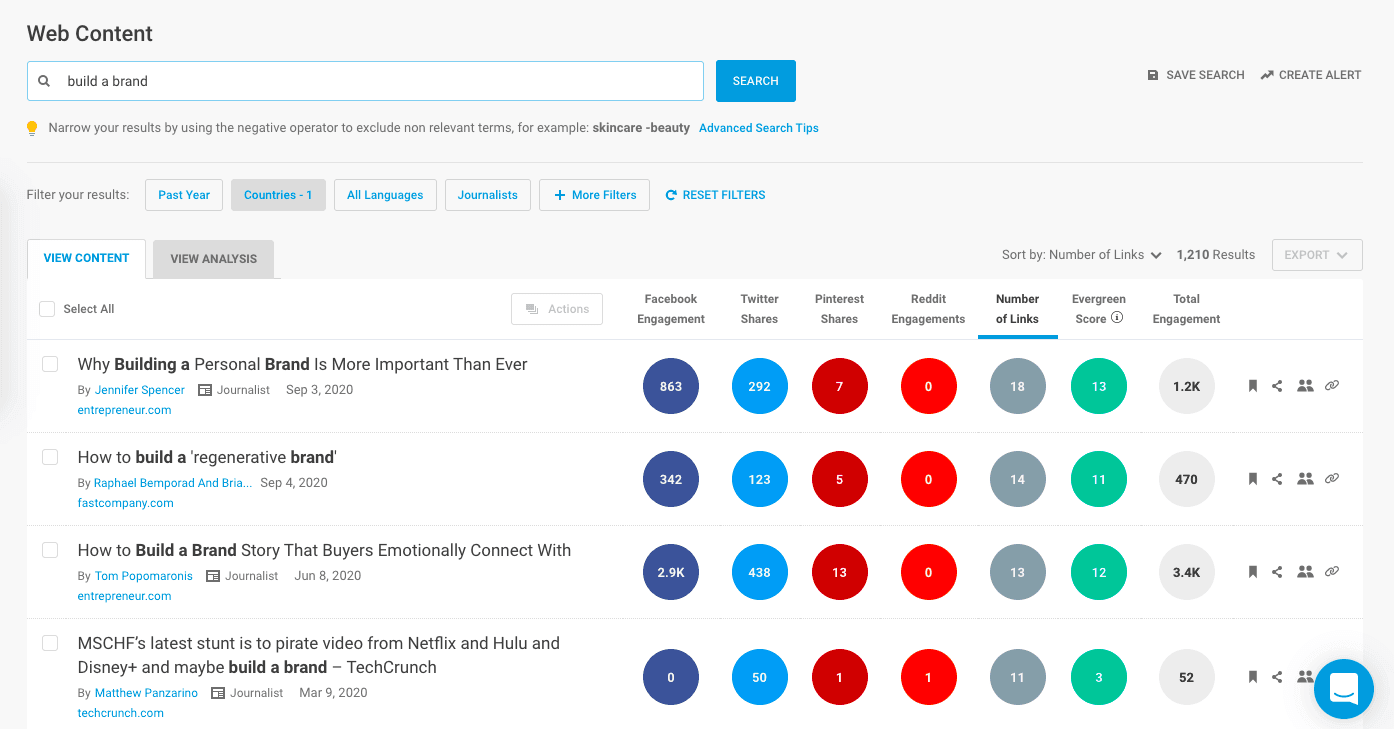
When you have a complete view of the content your competitor has published about the topic you want to write about, you’ll be able to clearly see where you can fill in the gaps with your own content.
You can take it a step further and read comments left on these blog posts to see if there are parts they want more clarification on or parts they wished were covered. Strategically targeting the content gap in your competitor’s content will give you an edge because you’ll be delivering something new that the market wants to know more about.
Step 6. Review Previously Published Articles on the Topic
Just because some topics or article ideas have been written about before doesn’t mean they’re not worth writing about again.
There’s always some new development or technique that makes past content worth revisiting. Aside from putting out new posts, you can refresh old content and breathe new life into them.
Updating old content will show Google that the content is relevant and fresh. If there are errors within the article, like broken links or images, you’ll be able to update them. You can also update them with new learnings, statistics, and latest information to make it valuable for past and new readers.
Underperforming blog posts can get a second wind if you audit past articles and update them. You can also do this for pillar and evergreen content to make sure they keep giving you passive traffic.
You can even take your existing content and repurpose it into different articles or content types. For example, you can expound on a list of 10 strategies by dedicating an article to one strategy.
[Tweet “You can take your existing #content and repurpose it into different articles or content types.”]
Step 7. Plot Article Ideas in a Collaborative Content Calendar, Like CoSchedule
Now that you have a list of blog article ideas that’s been vetted as content relevant to your audience, what they’re searching for, and fills a content gap, make sure they’re not lost by putting them in one place your team can collaborate on.
CoSchedule’s idea board allows teams to easily see blog topics — whether these ideas were theirs or another team member’s.
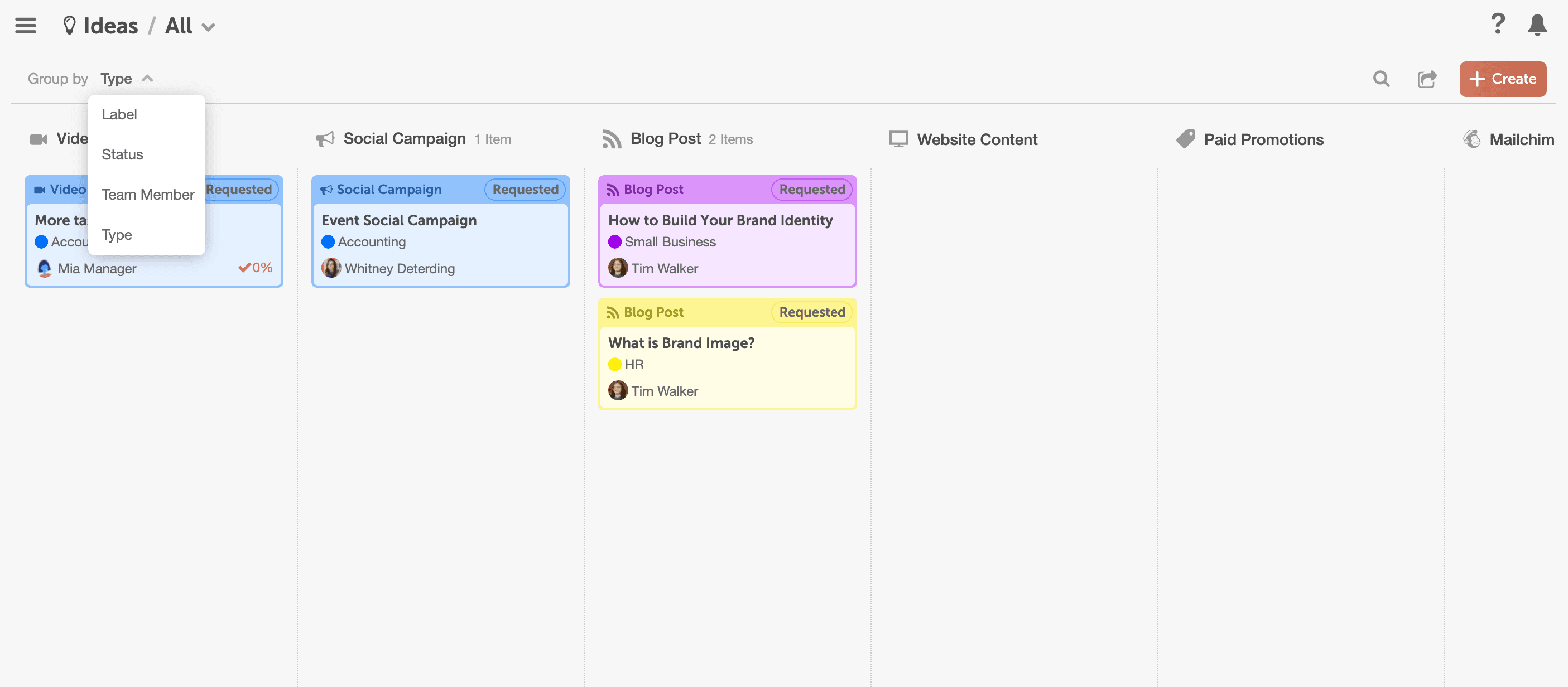
You can create an idea on the board and put relevant information inside the idea for easy reference. You can also move them around different projects or dates in your content calendar. You can customize your ideas with different colors to give you a better visual of how your ideas are progressing.
Transferring ideas into different campaigns, reassigning them to different team members, or scheduling them for a different date is also as simple as dragging and dropping them into the right date or column.
When your blog post idea is easily visible on your content calendar, you and your team are more likely to take action than if they remain out of sight. This fosters collaboration, and your team will be free to add their own ideas and make suggestions to improve the project.
You can give your whole organization access to your content calendar or idea board, like your sales or customer support teams, so everyone can pitch in their own ideas for content.
Collaborating on content can give teams — especially remote ones — ways to communicate and learn from each other. It can boost overall morale and retention rates as collaboration helps keep teams engaged.
Generate Article Ideas: Key Takeaways
Every part of content creation can be structured to provide you with a reliable way to generate quality content.
Ideation is no different.
Start by understanding your audience well enough to know their interests and their pain points. Allow yourself to brainstorm as freely as you can and use tools and techniques at your disposal to qualify ideas and know which ones to prioritize.
When you develop and stick to your ideation process, there’s no reason you’ll ever struggle to come up with a compelling content idea again.

